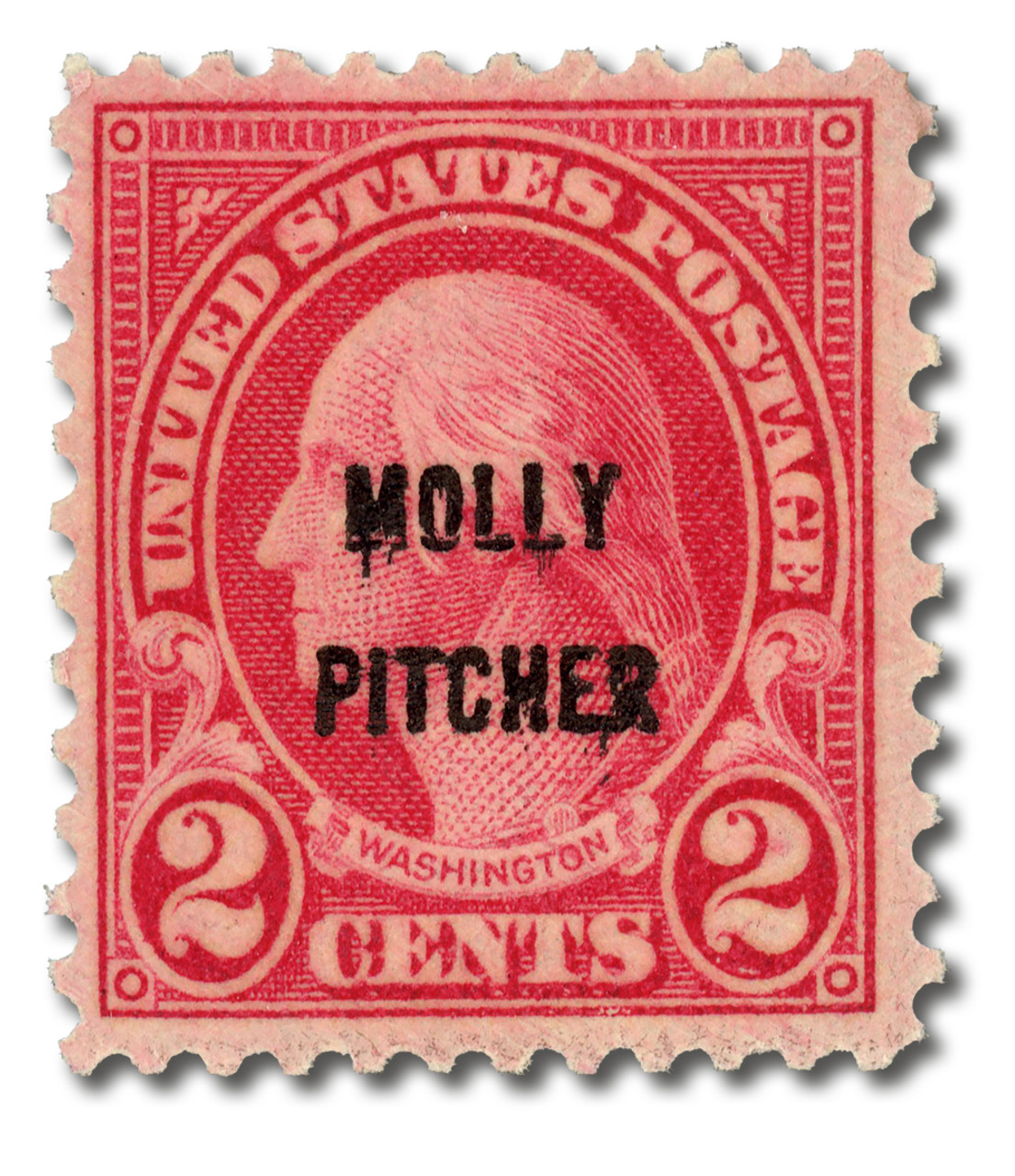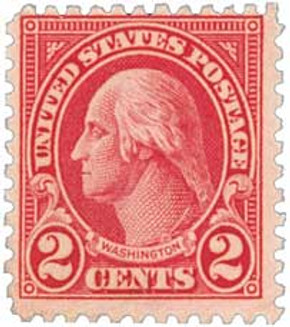
U.S. #646
1928 2¢ Battle of Monmouth
First Day of Issue: October 20, 1928
First City: Red Bank, NJ; Freehold, NJ
Quantity Issued: 9,779,896
Printing Method: Rotary Press
Perforation: 11 x 10.5
Color: Carmine
As the anniversary of the Battle of Monmouth approached, New Jersey residents requested that a stamp be issued honoring the fabled her... more
U.S. #646
1928 2¢ Battle of Monmouth
First Day of Issue: October 20, 1928
First City: Red Bank, NJ; Freehold, NJ
Quantity Issued: 9,779,896
Printing Method: Rotary Press
Perforation: 11 x 10.5
Color: Carmine
As the anniversary of the Battle of Monmouth approached, New Jersey residents requested that a stamp be issued honoring the fabled heroine Molly Pitcher. However, the Post Office Department claimed it had issued its quota of commemoratives and couldn't issue the stamp they wanted. But New Jersey Congressman Harold G. Hoffman believed that his state deserved a stamp for its role in the Revolution and continued to write letters to the Post Office Department. Finally, with support from Connecticut Congressman John Q. Tilson, the Department agreed to issue an overprinted stamp, as they had done with the Discovery of Hawaii stamp. While New Jersey residents were happy to have their stamp, collectors and the general public were unimpressed with the stamps lack of creativity, not even showing who or what Molly Pitcher was.













